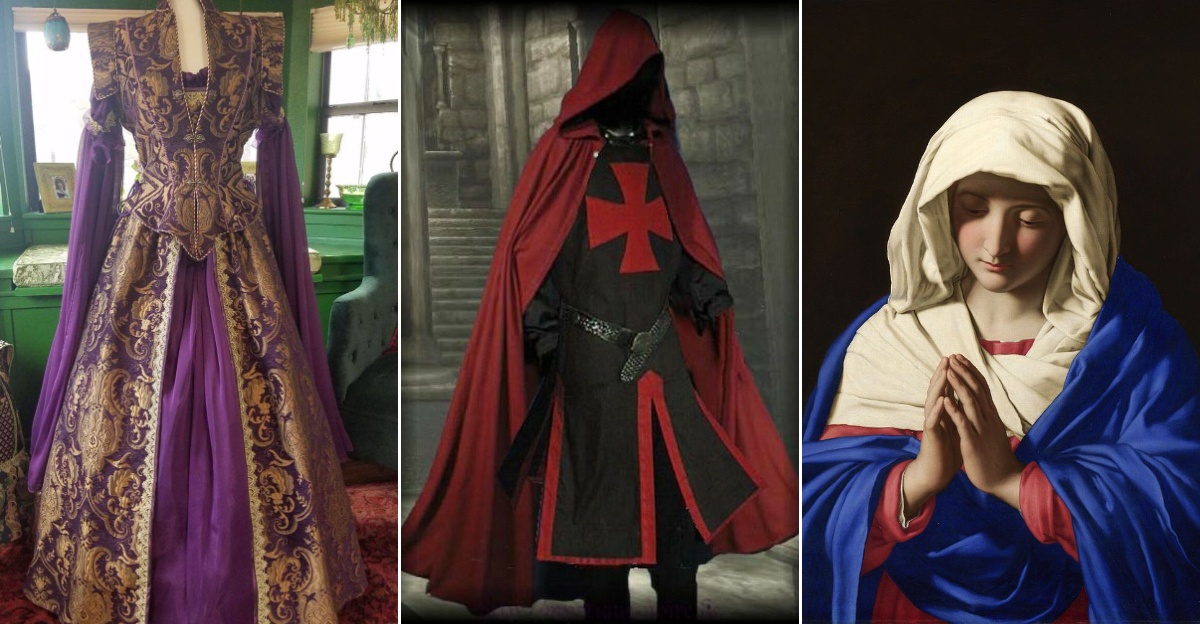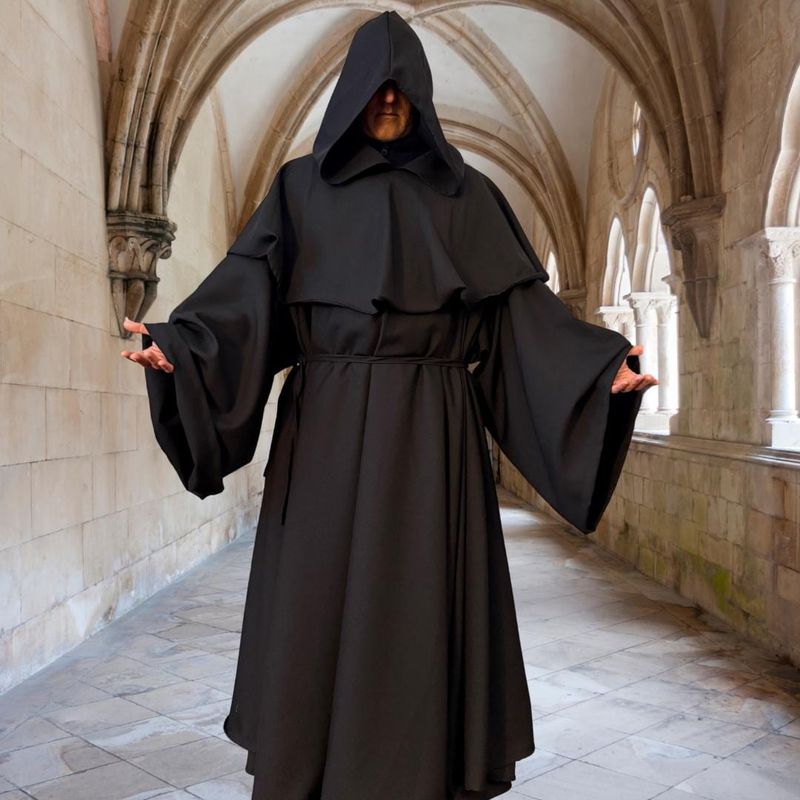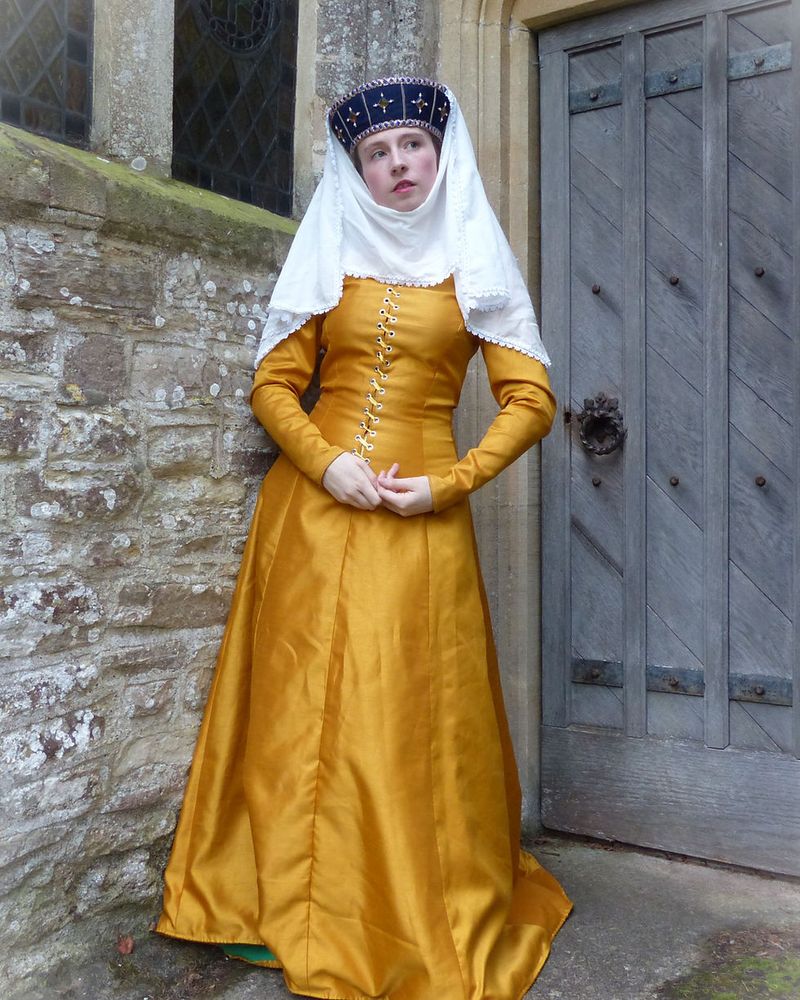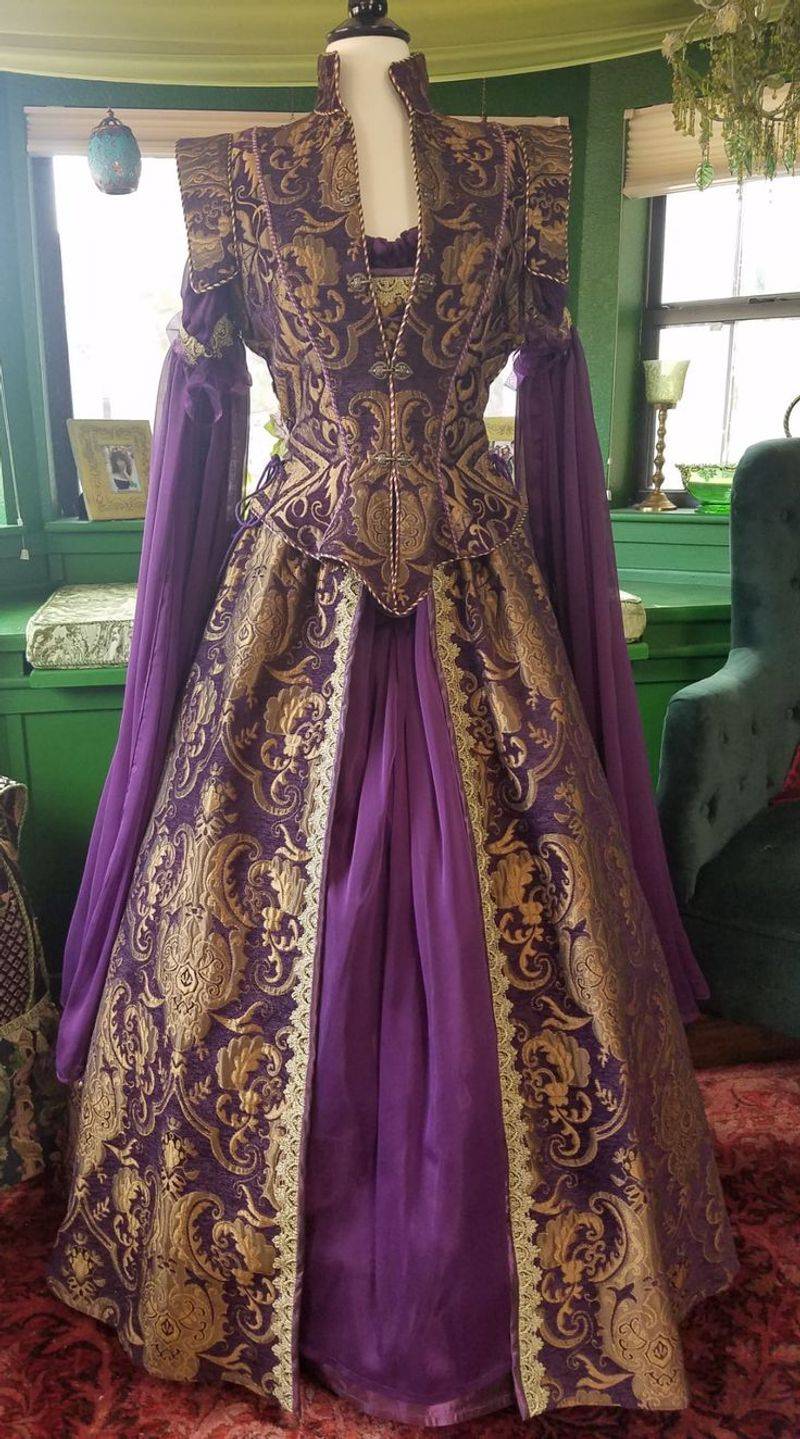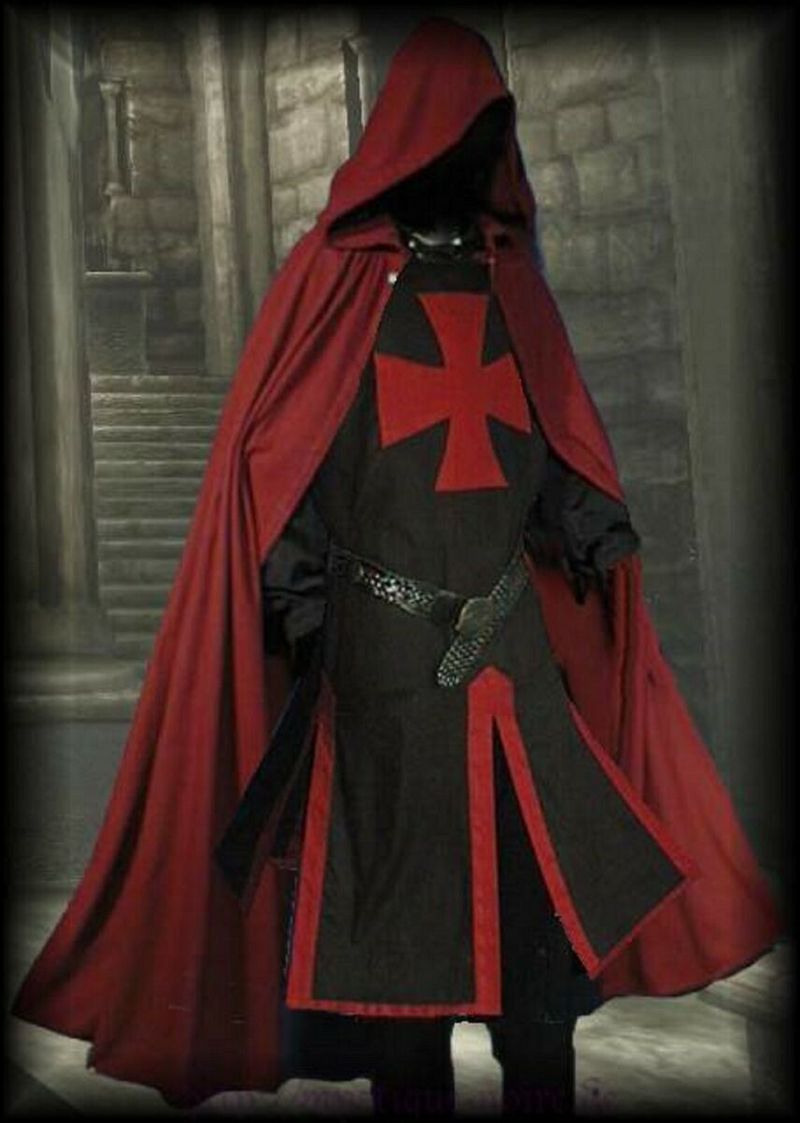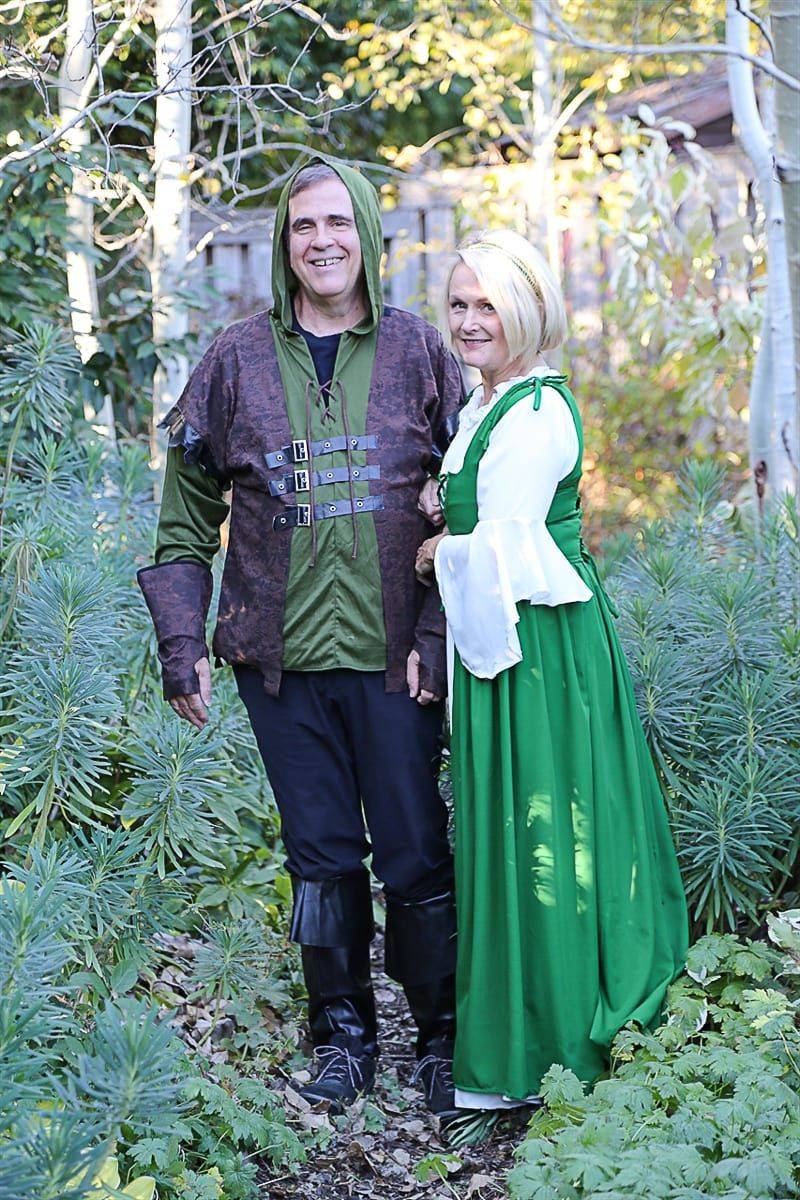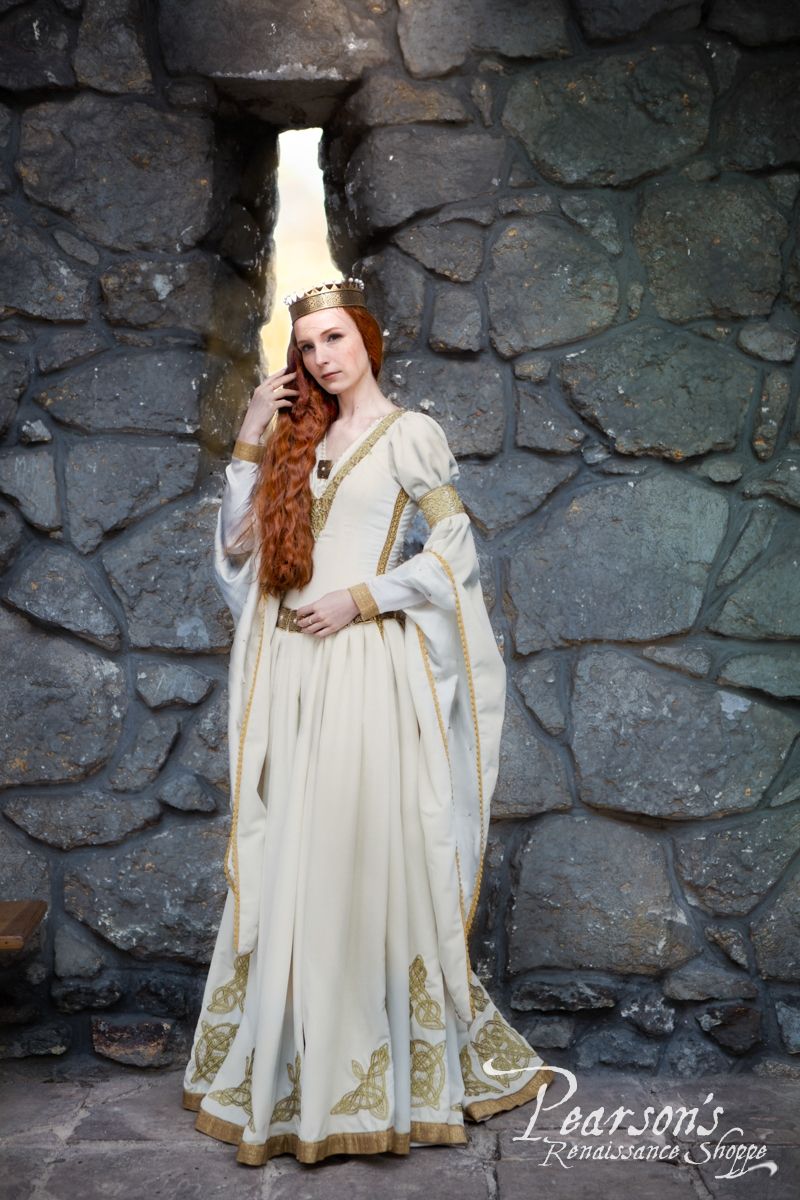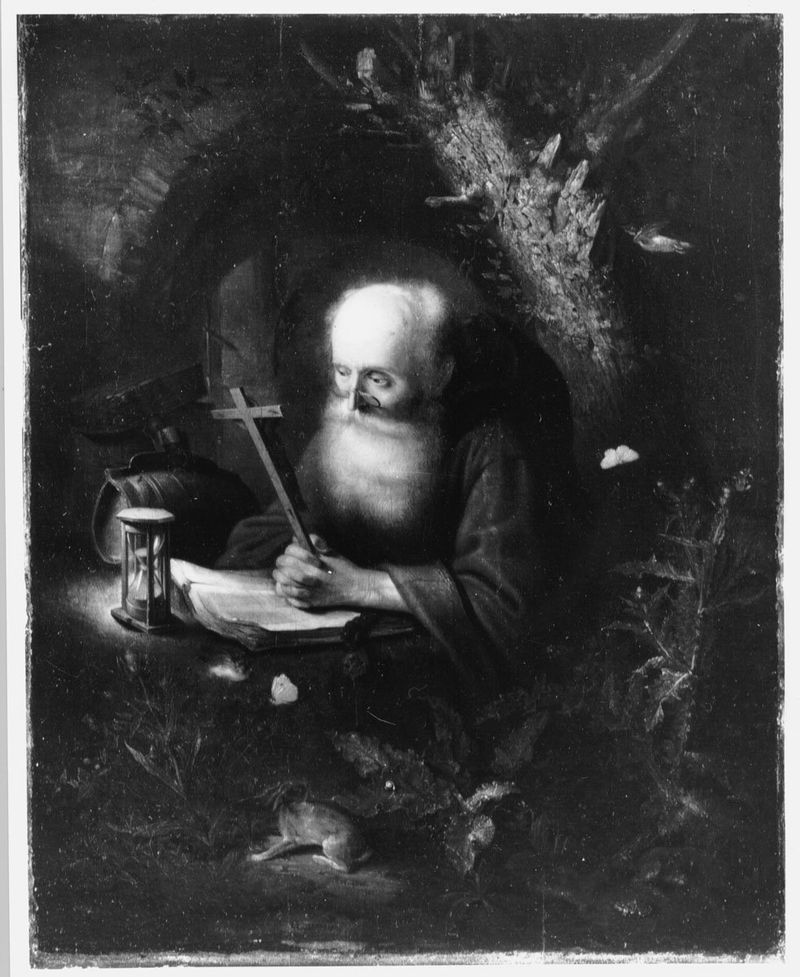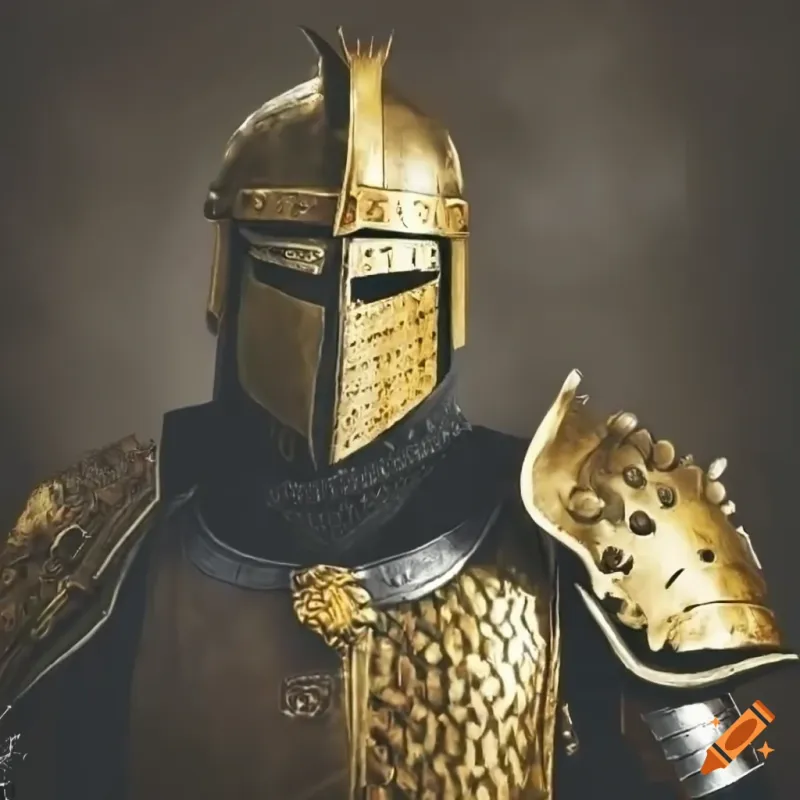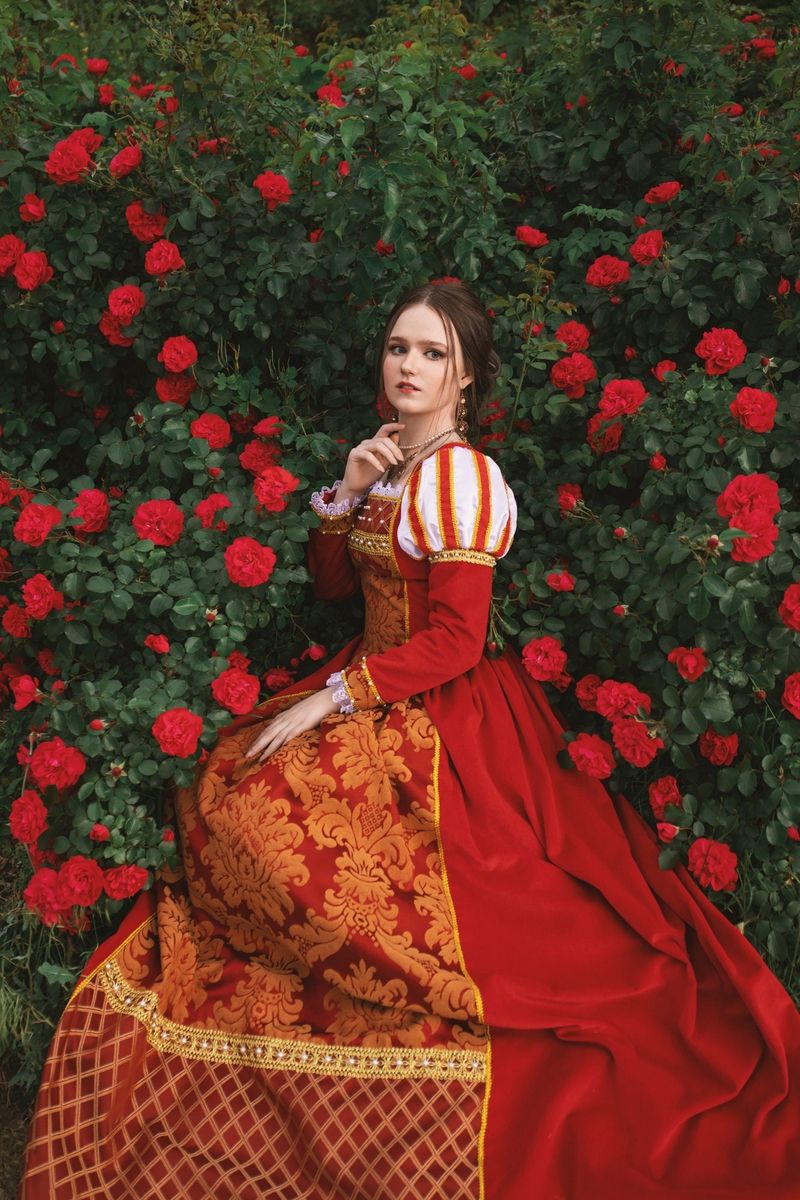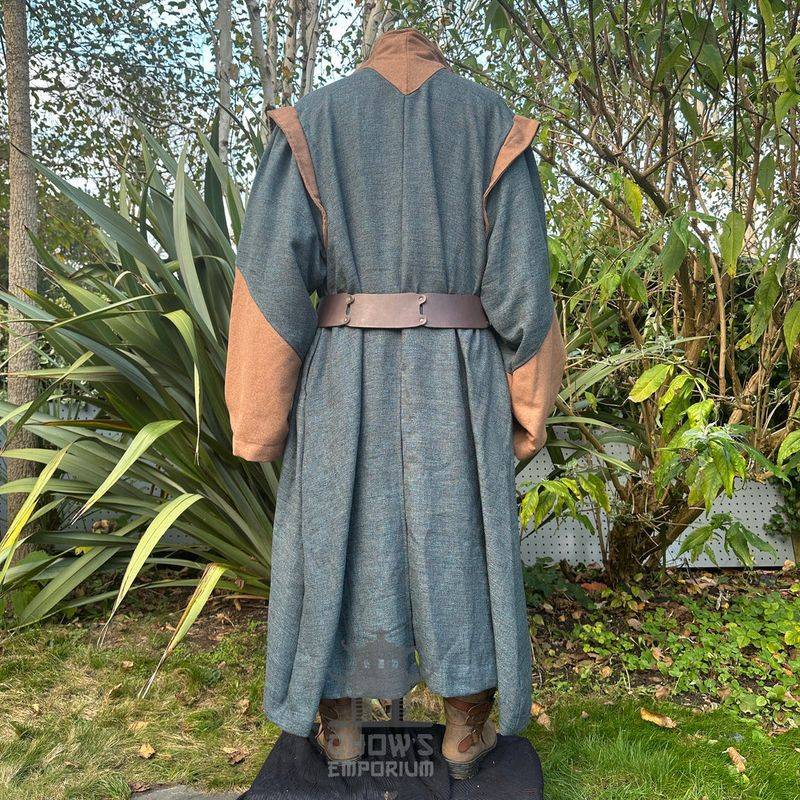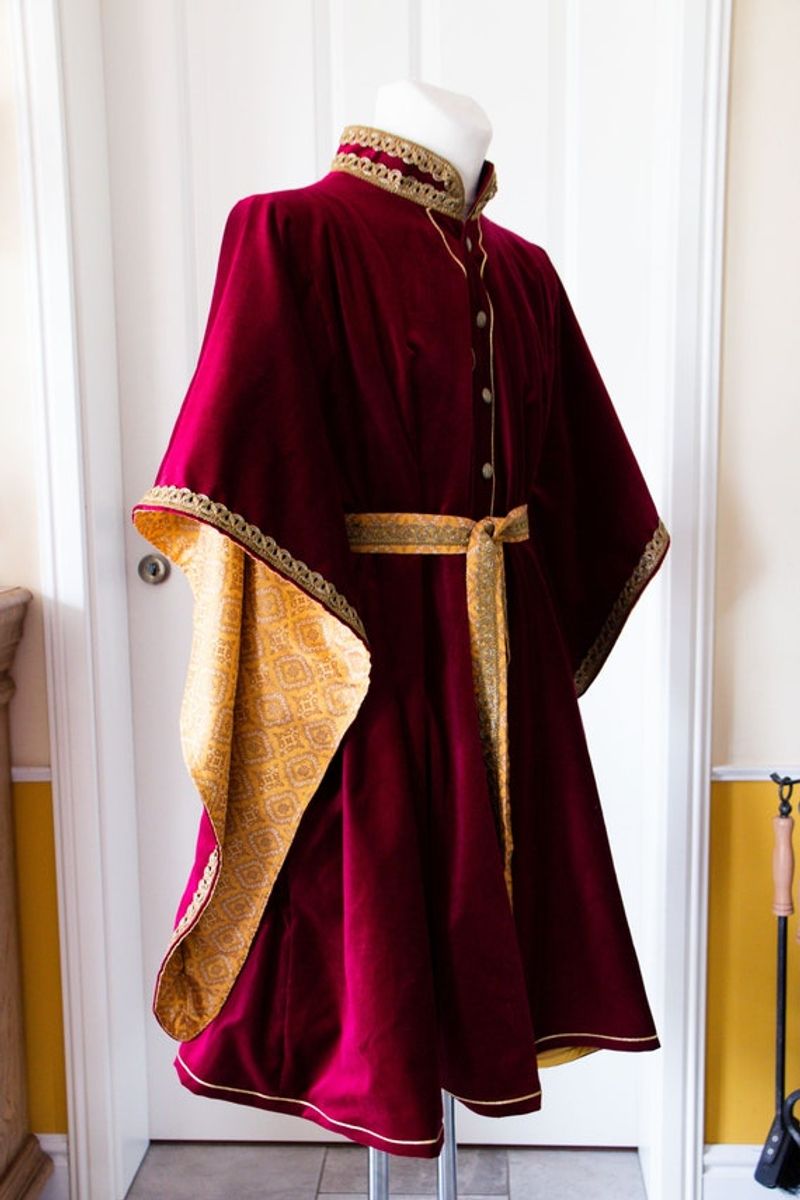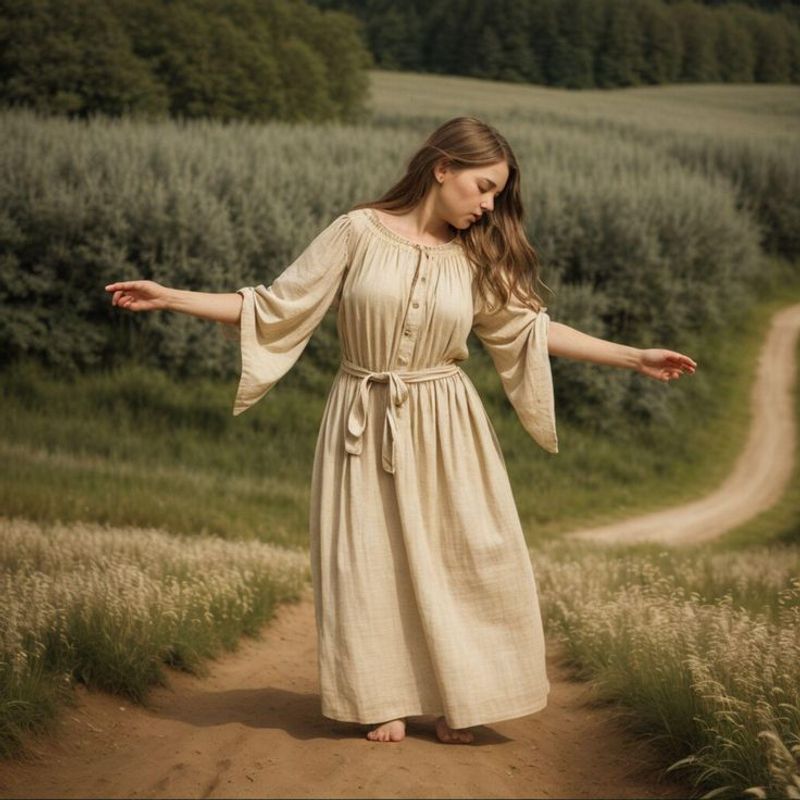In the Middle Ages, color wasn’t just about fashion—it was a language. The shade you wore told the world who you were, what you believed, and where you stood in society. Whether signaling piety, power, or scandal, each hue carried a message. Here are 17 colors from the medieval world and what they secretly said about you.
1. Black — I’m Either Mourning… or a Monk
Black carried the weight of the world in medieval times. It symbolized humility and repentance in monastic dress but also meant mourning or power in noble courts. A monk might don black to signify a life of contemplation, while a noble might wear it to a funeral. The color’s dual nature reflected life’s paradoxes. It was both the shadow of grief and the elegance of restraint. Black whispered of life’s mysteries, drawing a line between the earthly and the divine. In its depths, it offered solace and contemplation.
2. Yellow — I’m a Traitor (Unless I’m Rich)
Yellow, a color of complexity, wore two faces in medieval times. On one hand, it symbolized betrayal, as Judas Iscariot was often depicted in yellow. On the other, a rich golden yellow signified wealth and divinity. Merchants and nobles, draped in golden hues, flaunted their status. Yet, the color could whisper of deceit, a subtle warning in the vibrant palette.
In its duality, yellow told tales of prosperity and peril, a vibrant conundrum.
3. Purple — I’m Closer to God Than You
Purple was reserved for royalty and church elites, a color of divine right and authority. Made from expensive dyes, it signaled wealth and power, perhaps even a title.
The dye was extracted from the murex shell, painstakingly gathered by those wanting to flaunt affluence. This color was more than just a hue; it was a statement. It said, “I am chosen by God,” echoing through the corridors of medieval power. Wearing purple was a privilege, a mark of status and influence.
4. Red — I Have Power, Passion… and Maybe Blood on My Hands
In the medieval palette, red stood for power, passion, and sometimes blood. Knights cloaked in red rode into battle, brandishing their courage and strength. But red could also mean danger or bloodshed, a double-edged sword in the art of color. The dye, extracted from roots or beetles, was precious.
Red was both life and death, an intense blend of admiration and fear. It captured the essence of medieval drama.
5. Blue — I’m Pure, Loyal, and Possibly Blessed
Blue was synonymous with purity and loyalty in the medieval color spectrum. Often associated with the Virgin Mary, it became a symbol of devotion and spirituality. Peasants and clergy alike wore blue, trusting in its calming influence. This color was derived from the indigo plant or precious lapis lazuli, expensive and rare.
Blue whispered of peacefulness in a tumultuous time, a heaven-sent balm for the soul. It was divine in its quiet grace.
6. Green — I’m Young, In Love, or Up to No Good
Green, the color of youth, fertility, and sometimes mischief, danced on the edges of medieval imagination. It was the hue of new beginnings, like the first buds of spring. Lovers exchanged green tokens, hoping for prosperity and passion. Yet, it could also hint at the supernatural, the unfaithful, and the mischievous.
Green was alive and full of contradictions, a mirror to the complexities of love and adventure. It whispered of secrets hidden among the leaves, waiting to be discovered.
7. White — I’m Pure… or Maybe a Widow
White, the color of purity and innocence, was draped upon brides and saints in the medieval era. It symbolized chastity, a fresh start, and spiritual clarity. Widows, too, wore white in some regions, marking a life left behind. The dual symbolism captured life’s transitions, from joyous beginnings to solemn ends.
White stood for new paths and sacred rites, a blank page in the canvas of life. It was both a promise and a farewell.
8. Gray — I’ve Given Up Earthly Pleasures
Gray, the color of penitence and humility, cloaked those who shunned earthly pleasures. Hermits, nuns, and beggars wore gray to reflect their worldly detachment. It was a color of aging and wisdom, a whisper of life’s transience.
Gray spoke of surrender, a quiet acceptance of life’s impermanence. It was both a refuge and a challenge, asking one to let go and embrace the unknown. In its shadows, gray offered peace.
9. Gold — I’m Important (and I Want You to Know It)
Gold, the color of kings and celestial power, shimmered in the medieval world. It represented divine light, a reflection of heaven’s glory. Embroidered into robes or used on armor, gold announced one’s importance.
The gold leaf adorned religious icons, a bridge between the earthly and the divine. It was a color of aspiration and ambition, a statement of one’s place in the cosmos. Gold glimmered with promise and authority, a radiant testament to power and privilege.
10. Brown — I’m Honest and Down-to-Earth
Brown, the color of the earth, spoke of honesty and hard work. Worn by farmers, monks, and the working class, it was a badge of humility. Brown garments whispered of toil and integrity, a connection to the land.
Brown was unpretentious, a steadfast companion in a world of grandeur. It signified a life rooted in reality, a celebration of simplicity. In its earthy embrace, brown offered stability and sincerity, a quiet strength in a bustling world.
11. Crimson — I’m as Wealthy as I Am Dangerous
Crimson, a color of luxury and danger, captured the imagination of medieval elites. Derived from cochineal or kermes insects, the dye was a symbol of wealth. A noblewoman in a crimson gown commanded attention, her presence a blend of allure and threat. The color also hinted at sin and lust, a vivid reminder of passion’s darker side.
It was a color of contradictions, a vivid tapestry of desire and danger. Crimson spoke of power and intrigue.
12. Indigo — I’m Elite and Educated
Indigo, a color of depth and mystery, found its place among the educated and elite. The dye was rare, a testament to one’s scholarly pursuits.
Indigo whispered of wisdom and intellect, a color of the night sky full of secrets. It adorned royal wardrobes and illuminated manuscripts, a mark of sophistication. In its dark elegance, indigo invited exploration and discovery, a cerebral journey through time. It was the color of the mind.
13. Orange — I’m Bold and Not Afraid to Be Different
Orange, a rare and bold color in medieval times, was worn by those unafraid to stand out. It was fiery and vibrant, a statement of individuality.
The color was both joyous and garish, a celebration of life in all its chaos. It challenged the norms, a vibrant burst against the subdued palette of medieval attire. Orange was the color of creativity and courage, a reminder that life was to be lived fully. It was a daring embrace of the unconventional.
14. Teal — I’m a Trendsetter (in a Medieval Way)
Teal, though not exactly as we know it today, was a color of sophistication and artistry. Fine wool and tapestry work featured hues of teal, marking trendsetters of the medieval world.
This color suggested a refined taste, a subtle departure from the ordinary. Teal hinted at innovation and creativity, a nod to those who dared to envision a different world. In its unique blend, teal was a quiet rebellion.
15. Silver — I’m Holy or Heavenly
Silver, a color of divinity and purity, shimmered with celestial associations. It reflected moonlight and mystery, a bridge between the earthly and the spiritual.
Silver adorned religious icons, a testament to faith and devotion. It was both ethereal and grounded, a color that danced between worlds. In its gleam, silver spoke of heavenly aspirations and earthly duties, a balance of the sacred and the mundane. It was the color of dreams and reality.
16. Burgundy — I’m Powerful, But Subtle About It
Burgundy, a favorite among nobility, whispered of power with subtlety. It was a color of wisdom and wealth, a refined choice for those who knew their worth.
The color suggested a quiet authority, a presence felt rather than seen. Burgundy was the hue of intellect and influence, a blend of grace and strength. It was a testament to those who wielded power with wisdom, a color that spoke in whispers rather than shouts. Burgundy was elegance defined.
17. Beige — I’m Invisible (and That’s the Point)
Beige, the color of modesty and simplicity, clothed those who shunned the spotlight. Unbleached and undyed, it spoke of humility and submission.
Beige was the antithesis of opulence, a choice for those who valued the understated. It whispered of obscurity, a life lived in quiet dignity. In its simplicity, beige offered a refuge from the vibrant tapestry of medieval life. It was a color of invisibility, a gentle embrace of humility and grace.
